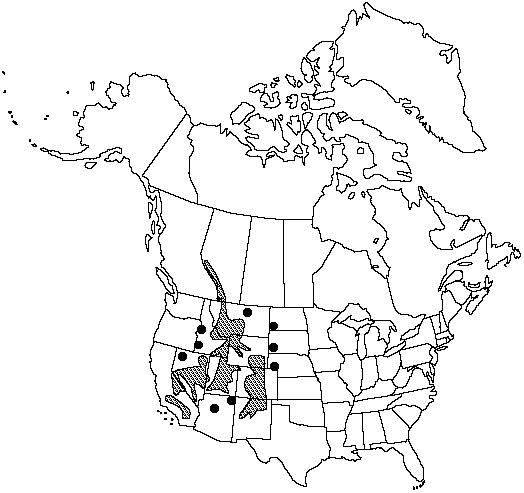Difference between revisions of "Pinus flexilis"
Account Exped. Pittsburgh 2: 27, 35. 1823.
imported>Volume Importer |
imported>Volume Importer |
||
| Line 53: | Line 53: | ||
|publication year=1823 | |publication year=1823 | ||
|special status=Endemic | |special status=Endemic | ||
| − | |source xml=https:// | + | |source xml=https://bitbucket.org/aafc-mbb/fna-data-curation/src/2e0870ddd59836b60bcf96646a41e87ea5a5943a/coarse_grained_fna_xml/V2/V2_402.xml |
|genus=Pinus | |genus=Pinus | ||
|species=Pinus flexilis | |species=Pinus flexilis | ||
Latest revision as of 20:23, 5 November 2020
Trees to 26m; trunk to 2m diam., straight to contorted; crown conic, becoming rounded. Bark gray, nearly smooth, cross-checked in age into scaly plates and ridges. Branches spreading to ascending, often persistent to trunk base; twigs pale red-brown, puberulous (rarely glabrous), slightly resinous, aging gray, smooth. Buds ovoid, light red-brown, 0.9–1cm, resinous; lower scales ciliolate along margins. Leaves 5 per fascicle, spreading to upcurved and ascending, persisting 5–6 years, 3–7cm × 1–1.5mm, pliant, dark green, abaxial surface with less conspicuous stomatal bands than adaxial surfaces, adaxial surfaces with strong, pale stomatal bands, margins finely serrulate, apex conic-acute to acuminate; sheath 1–1.5(–2)cm, shed early. Pollen cones broadly ellipsoid-cylindric, ca. 15mm, pale red or yellow. Seed cones maturing in 2 years, shedding seeds and falling soon thereafter, spreading, symmetric, lance-ovoid before opening, cylindro-ovoid when open, 7–15cm, straw-colored, resinous, sessile to short-stalked, apophyses much thickened, strongly cross-keeled, umbo terminal, depressed. Seeds irregularly obovoid; body 10–15mm, brown, sometimes mottled darker, wingless or nearly so. 2n =24.
Habitat: High montane forests, often at timberline
Elevation: (1000–)1500–3600m
Distribution

Alta., B.C., Ariz., Calif., Colo., Idaho, Mont., Nebr., Nev., N.Mex., N.Dak., Oreg., S.Dak., Utah, Wyo.
Discussion
Pinus flexilis, much branched with a strongly tapering trunk, is little utilized because of its form and relative inaccessibility. It reportedly forms intermediates with P. strobiformis where the two overlap. The fresh-cut wood has the odor of turpentine.
Selected References
None.